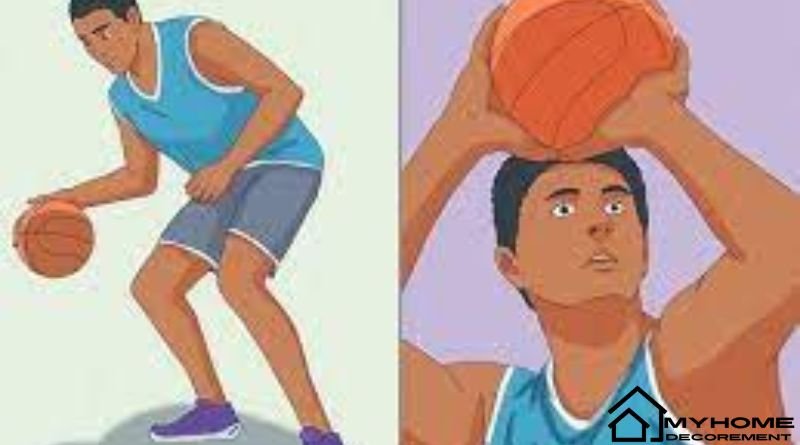Before diving into the specifics of drawing basketball scenes, it’s crucial to understand the basics. Basketball drawing involves capturing the movement, anatomy, and environment associated with the game. Whether you are illustrating a player mid-dunk, a close-up of the basketball, or a full-court scene, each element requires attention to detail.
Movement and Anatomy: Basketball is a fast-paced sport, and capturing motion is key. Pay attention to the positioning of limbs and the tension in the muscles. Players often exhibit explosive movements, so understanding human anatomy helps in depicting realistic and dynamic poses.
Environment and Equipment: Incorporate elements like the basketball court, hoop, and crowd to add depth to your drawing. The texture of the basketball, the net of the hoop, and the markings on the court are essential details that bring authenticity to your work.
Tools and Materials for Drawing Basketball
Selecting the right tools and materials can significantly impact the quality of your basketball drawings. Here are some recommendations:
Pencils and Charcoal: For sketching and shading, high-quality pencils ranging from H to B grades and charcoal sticks are ideal. They allow for precision in detailing and varying levels of shading.
Markers and Pens: Fine liners and markers are perfect for outlining and adding bold details. They can enhance the clarity and definition of your drawings.
Digital Tools: Software like Adobe Illustrator, Photoshop, or Procreate can be used for digital basketball drawings. These tools offer a range of brushes and effects that can mimic traditional drawing techniques.
Techniques for Capturing Motion in Basketball Drawing
One of the most challenging yet rewarding aspects of basketball drawing is capturing motion. Here are some techniques to help you achieve this:
Gesture Drawing: Practice quick, loose sketches to capture the overall movement and flow of the players. Gesture drawing helps in understanding the action and posture without getting bogged down by details.
Action Lines: Use action lines to guide the movement in your drawing. These lines represent the direction of motion and can make your artwork more dynamic.
Sequential Drawing: Create a series of drawings showing different stages of a movement. This technique, similar to animation, helps in understanding and illustrating the fluidity of motion.
Detailing and Shading in Basketball Drawing
Once the basic structure and motion are in place, focus on adding details and shading to bring your drawing to life.
Textures and Patterns: Pay attention to the textures of different elements. The rough surface of the basketball, the fabric of the players’ uniforms, and the wood grain of the court all add realism to your drawing.
Light and Shadow: Proper shading is crucial for creating depth. Identify the light source and shade accordingly. Use softer shades for areas farther from the light and darker shades for areas in shadow.
Highlights: Adding highlights can enhance the three-dimensional effect of your drawing. Use a white pencil or eraser to create highlights on the basketball, players’ faces, and other key areas.
Creating Dynamic Basketball Scenes
Drawing a single player is one thing, but creating a dynamic scene with multiple players adds another layer of complexity.
Composition: Plan your composition carefully. Arrange the players, hoop, and background elements in a way that leads the viewer’s eye through the drawing. Consider using the rule of thirds to place key elements strategically.
Interaction: Show interaction between players. This could be a defender blocking a shot, a player passing the ball, or a team celebrating a win. Interaction adds a narrative element to your drawing.
Emotion: Capture the emotions of the players. The intensity of a player’s expression, the tension in their body, and the excitement of the crowd can all convey the high stakes and emotions of a basketball game.
Practicing and Improving Your Basketball Drawing Skills
Like any art form, improving your basketball drawing skills requires practice and dedication. Here are some tips to help you progress:
Study Real Games: Watch basketball games and study the players’ movements. Pause at different moments and try to sketch the poses. This helps in understanding the real-time dynamics of the sport.
Reference Photos: Use reference photos to practice. Focus on different aspects like anatomy, clothing folds, and equipment details. Over time, this will help you draw from imagination more accurately.
Join Art Communities: Join online or local art communities. Share your work, get feedback, and learn from other artists. Communities can provide motivation and valuable insights to help you grow.
Conclusion: Mastering Basketball Drawing
Mastering “drawing
= basketball” is a journey that combines artistic skills with a love for the sport. By understanding the basics, using the right tools, practicing motion capture techniques, and focusing on details, you can create compelling and dynamic basketball drawings. Keep practicing, stay inspired by real games, and continue to push your creative boundaries. Whether you are drawing for fun or aiming to become a professional sports illustrator, the skills and techniques discussed in this article will set you on the path to success.
Read also: check



